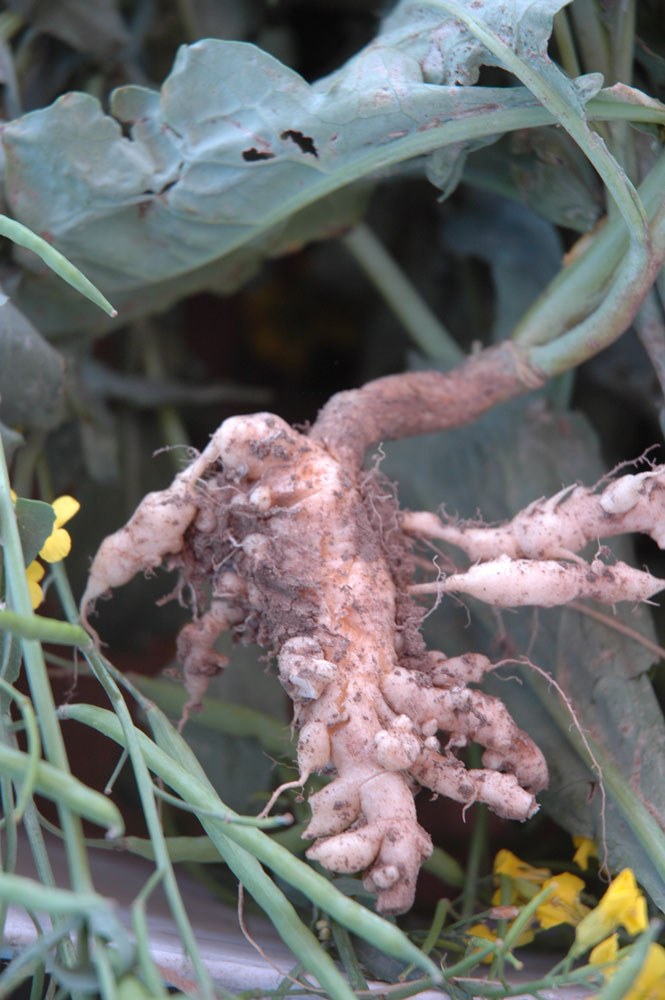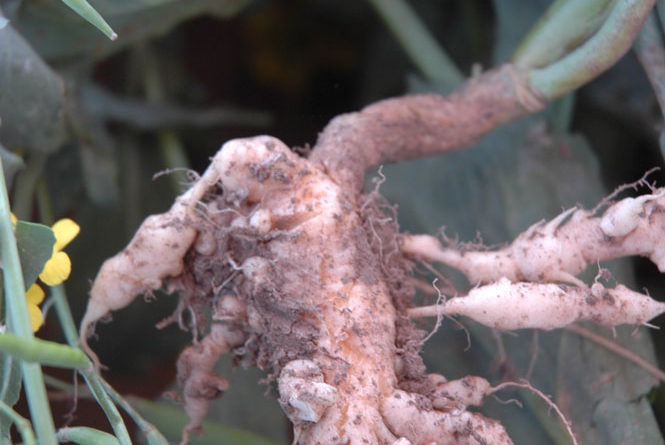County still clubroot free – but producers should remain vigilant
By Sean Feagan, Local Journalism Initiative Reporter

Clubroot, a plant disease caused by the soil-borne microorganism Plasmodiphora brassicas, affects plants in the cabbage family, including canola and mustard. On infected plants, the disease manifests as club-like growths on the roots, as well as a range of possible above-ground symptoms, from wilting, stunting, and yellowing, to premature ripening and seed shriveling – traits that can be disastrous for crop quality and yield.
The disease spreads by the transmission of P. brassicae resting spores existing in the soil of infected areas, which may remain viable for years. Anytime the ground is disturbed, and soil containing the pathogen’s resting spores is freed, there is a possibility it will be spread by livestock, equipment, people via boots or clothing or other vectors, and infect new lands.
First identified in Alberta in 2003 near Edmonton, clubroot has since been found in at least 43 municipalities throughout the province. To monitor for the disease in Wheatland County, the county performs yearly field inspections, said Russ Muenchrath, Wheatland County manager of agricultural services.
“Every municipality has their own program as what they can do. We aim for at least 100 field inspections every year,” said Muenchrath. Inspections, which last year numbered about 108, can be performed by county fieldmen or county agricultural support staff, he said.
During each inspection, plants are pulled up and their roots are inspected for galls (the “clubs”). If signs of clubroot infection is identified, the roots are sent away for testing.
To date, no evidence of clubroot infection has been identified throughout the county thus far. However, there is still a significant risk clubroot will appear in Wheatland County, as cases have been confirmed in neighbouring counties of Rocky View, Kneehill, and Newell, as of late 2019.
Muenchrath said landowners and producers must stay vigilant and continue to scout fields for signs of the disease, and the earlier in the season, the better.
“The obvious thing to look for, if the disease has progressed, is stunted plants, yellowing and premature ripening,” he said. “But if they can get out and scout before that and pull plants and pull their roots, that’s the best approach.”
Pulling plants is important because aboveground signs can be caused by other factors, such as drought or other diseases.
“There’s lots of other things that can look similar,” Muenchrath said.
Cleaning equipment is the best approach to stop the spread of clubroot. Landowners expecting new machinery on their property, such as for the construction of an oil well, should inquire about where the equipment has been, and what cleaning protocols are in place, said Muenchrath.
“If a company is coming from an area with clubroot, in that case, you may want to be more cautious as to what you allow,” he said. “You may want to have a higher protocol so far as cleaning.”
The importance of thorough equipment cleaning to limit the spread of clubroot was echoed by Jason Wilson, Wheatland County councillor and Agricultural Service Board chair.
“With seeding coming up, just be mindful to clean your equipment when you are moving fields,” he said. “We don’t want that disease coming into our municipality and putting more strain on our producers than there already is.”

